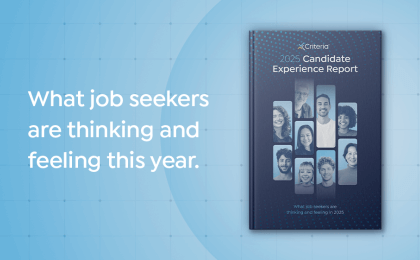D&I has been a hot topic in HR, and for good reason. Diversity initiatives are crucial for finding and supporting top talent from all backgrounds and abilities. Having a diverse team can propel a company’s performance and foster creativity and innovation.
A 2016 study by Boston Consulting Group found that companies with greater gender, geographic, and industry diversity also generated higher revenues. A survey from Witten/Herdecke University found that greater background and personality diversity yields greater creativity and more in-depth decision-making.
To put it simply: building diverse teams matters. Demand for more diverse workplaces has been increasing, with a recent Glassdoor survey predicting recruitment of D&I professionals to be a growing priority in the hiring space.
With so much buzz around creating more inclusive and diverse workspaces, here are some of the top D&I trends of 2020 to look out for:
Hiring D&I Specialists
Many companies value diversity initiatives but find making long-lasting improvements to be challenging. As a result, more and more companies have added D&I specialists to their HR teams that can carry out results. Between August 2018 and August 2019, online postings for D&I jobs rose by 30% in the US. Two-thirds of investments in D&I hiring have come from larger employers, with small and mid-sized companies showing signs of catching up. With D&I’s growing importance in the workplace, we can expect the hiring of D&I professionals to increase across companies of all sizes.
Broadening Job Requirements
One of the best ways to make workplaces more diverse is by broadening job requirements and considering candidates of all education and skill levels. Companies like Google, Ernst & Young, and Apple have recently followed this route by no longer requiring a 4-year degree for some of their top jobs.
Many companies are also easing work experience minimums, with hiring for potential becoming an increasing practice. Instead of weeding candidates out for lacking direct experience, companies are looking at candidates who are teachable and who possess skills, personality traits, and abilities to be a valuable member of their team. This practice can bring industry diversity to workplaces and give opportunities to groups that are typically underrepresented in certain fields.
Writing Inclusive Job Descriptions
Language in job descriptions matters. Something as simple as a single word can completely alter the types of candidates who apply for a role. For example, one company realized that only 2% of developer hires were women, and they began to question why. After meeting with Angie Chang, VP of HackBright Academy, she narrowed it down to one reason: the use of the word “hackers” in their job description. Angie pointed out that words like “hackers” can be difficult for women to identify with and likely turned them away.
When writing job descriptions, it’s critical to be mindful of word choice. Avoiding gender-coded language, utilizing inclusive diction, and eliminating “must-have” skills are great strategies that encourage candidates to apply for your role. Finally, emphasizing your company’s commitment to D&I in your job posting can assure diverse candidates that they are applying to the right place.
Pre-Employment Assessments
Utilizing pre-employment testing is a great tool for hiring the best talent. While resumes and interviews can tell you what a candidate has accomplished, pre-employment assessments can provide you with powerful insights like aptitude, personality, and emotional intelligence that provide an objective way to evaluate potential, beyond just experience.
Because assessments provide insights into a candidate’s potential, they allow you to identify talent from diverse backgrounds, experiences, and education levels. Implementing these assessments may help you find a candidate from a background that otherwise may have been overlooked.
Shifting to Diversity, EQUITY, and Inclusion
While valuing diversity and a sense of belonging and inclusion is great, sometimes it is not enough. According to Catalina Colman, director of HR and inclusion at Built in, “Equity is the process of ensuring that processes and programs are impartial, fair and provide equal possible outcomes for every individual.”
DEI, or Diversity, Equity, and Inclusion, accounts for the fact that employees do not all start at the same level. Therefore, D&I efforts may require different methods to support the diverse groups they’re meant to serve. Many companies are embracing DEI, and it will likely continue to be a growing topic in discussion of fair and inclusive workplaces.





